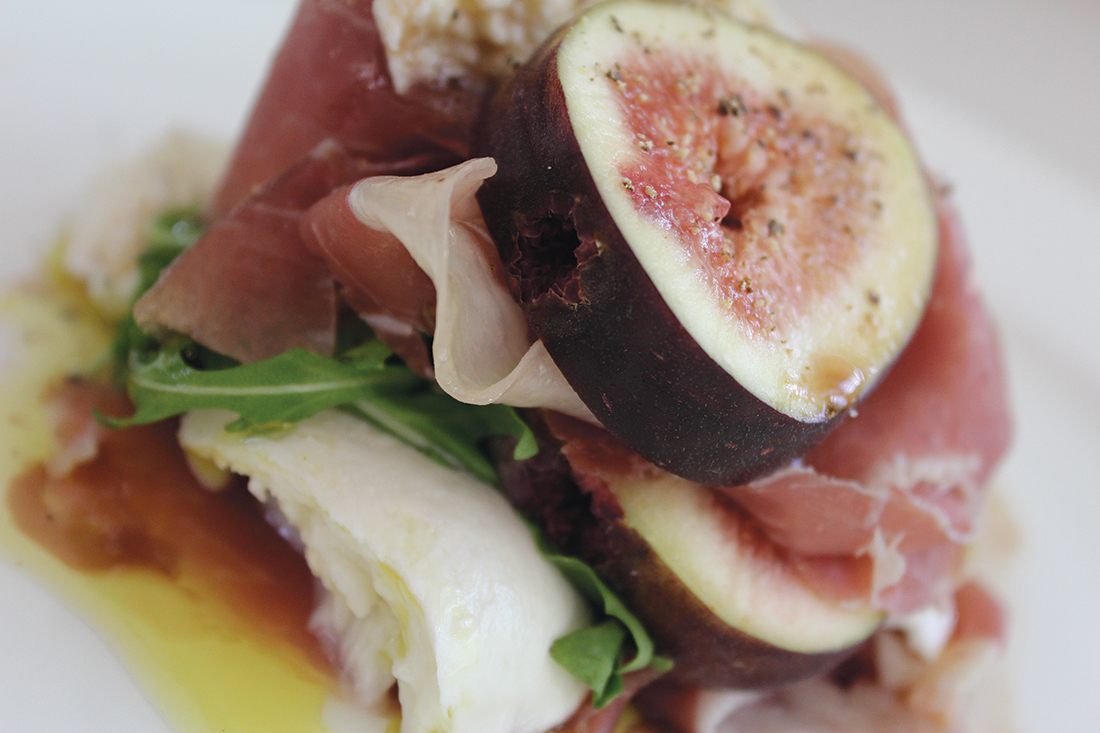
Autumn Daze
Matt Golinski welcomes the change in season and celebrates the power of provenance!
Summer gets a pretty good wrap in our Aussie minds. It’s all beaches, mangoes, backyard cricket and icy cold beers.
But autumn is really the season we should be grateful for.
The days are still long and sunny, but we can attend an outdoor event without much chance of being struck by lightning, pummelled by hail or fried to a crisp.
The mozzies and midgies tend to go back to wherever it is they go once it cools down, and we don’t have to mow the lawn every three days.
And to top it all off, local food is much easier to acquire.
The summer rain that’s filled dams across the coast becomes the lifeblood of all the sun-vulnerable leafy brassicas and classic autumn fruits like figs, strawberries, persimmons and feijoas.
Citrus orchards blush shades of yellow, orange and pink, and the early season varieties of avocadoes are harvested and shipped off to cafés ready for smashing.
Fishing boats enjoy calmer seas to haul in their catches and livestock thrive on grassy pastures through the more comfortable cooler days and nights.
All over Queensland every region produces its specialties that define it; apples, pears and grapes in the Granite Belt; pumpkins and watermelons from the South Burnett; macadamias in Wide Bay; or fish and shellfish out of the Fraser Coast waters.
Each has a fierce pride in what they bring to the table, many towns building cult-like food festivals (usually
involving a typically-Australian quirky event) around their main food production.
Rolling pumpkins down Policeman’s Hill in Goomeri; melon skiing in Chinchilla; or mullet throwing in Tin Can Bay are all drawcards that bring travellers flocking to country towns for a bit of fun, but they also play a role in creating a sense of regional provenance – the ingredient we relate to a place that makes it special.
In Italy every region boasts its own pasta types, its own cheeses, smallgoods and wine styles – local food culture thousands of years in the making.
In Australia we’re just getting started in comparison, but we have all the tools to develop that same culture – thousands of different microclimates and soil types, a melting pot of different nationalities all bringing their own ideas and energy, and a public which is increasingly interested in knowing where their food comes from.
On the Sunshine Coast we tend to take for granted how lucky we are to have so many different growing conditions, talented producers, and easy access to local food.
Bustling farmers’ markets, thoughtfully stocked fruit and vegetable shops and providores, farm gate sales, even some supermarkets on the coast recognise the importance of supporting the local industry and have whole sections dedicated to the cause.
The demand from diners to experience a sense of place from their food when they’re eating out has driven chefs and restaurants to source direct from the grower and develop strong relationships. The result is a better end product on the plate and a good story to tell.
Everything from local dairy, meats and seafood, to tropical fruits and nuts are all available and relatively easy to find on the coast. In fact, if there was one word to describe the region and how it differs from all the others in Australia it would have to be ‘diversity’.
As we roll into a new season in this sub-tropical paradise there is so much to look forward to, and most of it involves pleasing our taste buds and filling our bellies. Eat well.
Queensland fig, pan fried haloumi, rocket, Pomona honey & pistachio dust
Serves 2-4
Ingredients
- 200g Haloumi
- 2 x Figs
- 40ml Pomona Honey
- 20g Pistachios
Method
Toast the pistachios in an oven at 160 degrees for seven minutes or until lightly toasted. Cool slightly and blitz in a food processor until roughly chopped.
Cut the fig into four and set aside.
Cut the haloumi into 1cm thick chunks. Heat a thick bottom non-stick frying pan until hot, reduce to a medium heat and add little amount of cooking oil.
Place the sliced haloumi in the pan and cook until the cheese becomes golden and flip over and cook on both sides. Remove and place on a paper towel to drain off any excess oil and place on serving plate.
Using the same frying pan on a medium heat place the figs in the saucepan with one of the cut sides facing down and cook until figs start to caramelize. Flip the fig on to the other cut side and repeat the process. Once caramelized turn the fig on to the skin side and drizzle some Pomona honey over them. Quickly sauté for about 30 seconds, remove and place on top of the fried haloumi. Sprinkle toasted pistachios over.



